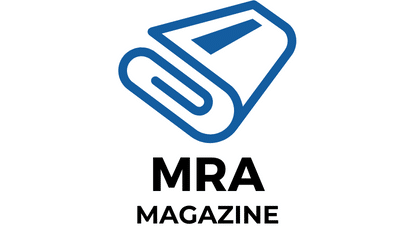How to Help a Dog with a Phobia of Thunder Without Medication?

Thunderstorms can be a scary event for many pets, especially dogs. The loud noises and sudden flashes of light can cause significant fear and anxiety in them. They may tremble, pant excessively, hide, or even become destructive. This fear is known as thunderstorm phobia. It’s a common problem in dogs, but, fortunately, there are effective ways to help them cope with their fear without using medication. Let’s delve into the details and learn how you can assist your pet through these challenging times.
Identifying the Signs of Thunderstorm Phobia
Keep a close eye on your dog during thunderstorms to understand their behavior better. This way, you can identify the signs of fear and anxiety early on. The severity of the symptoms varies from dog to dog. Some dogs may just seem a little uneasy, while others may become entirely petrified.
En parallèle : How to Set Up a Habitat for a Blind Guide Dog in Retirement?
Some of the most common signs of thunderstorm phobia in dogs include:
- Hiding in closets, under the bed or in dark corners
- Excessive barking or howling
- Panting and drooling
- Pacing or restlessness
- Uncontrolled urination or defecation
- Destructive behavior
- Attempting to escape
By identifying these signs, you will be able to respond promptly and help your dog cope with the situation more effectively.
Dans le meme genre : How to Introduce a Newborn Baby to a Protective Rottweiler?
Understanding Why Dogs Fear Thunderstorms
Before you can effectively help your dog deal with their fear of thunderstorms, it’s essential to understand why they react this way. The reasons can be diverse and complex.
For starters, dogs have a more acute sense of hearing than humans. This means they can hear the thunderclap much louder than we do, which can be frightening. Storms also create an array of other noises that we might not notice, such as the crackling of static electricity or the sound of rain on the roof, that can also cause alarm.
Another reason is the change in atmospheric pressure. Dogs can sense these changes in weather conditions, and it can make them feel uncomfortable or uneasy.
Remember, each dog is different, and what affects one might not affect another. It’s essential to understand your dog’s specific fears to address them effectively.
Implementing Behavior Modification Techniques
Behavior modification techniques are an effective way to treat dogs with thunderstorm phobia. The goal is to change your dog’s emotional response to the thunderstorms. Instead of associating the storm with fear, they should associate it with something pleasant.
One such technique is counter-conditioning. In this method, you reward your dog with treats, playtime, or positive attention during the storm. This helps your pet associate the storm with positive experiences.
Another technique is desensitization. Here, you expose your dog gradually to the sounds of a storm. You can use audio recordings of thunderstorms and play them at a low volume while rewarding your dog for remaining calm. Over time, you can gradually increase the volume. It would be best if you did this over a period of several weeks or months.
Creating a Safe Space for Your Dog
During a storm, your dog should have a safe space where they can retreat. This could be a small room, a closet, or even a crate. The idea is to have somewhere that your pet feels secure.
You should ensure that this space is comfortable and warm. You can add a favorite blanket or toy to make it more inviting. During a storm, encourage your dog to go to this safe space. However, do not force them if they are not willing. It should be a place they choose to go to when they feel anxious or scared.
In the long term, your dog will learn to associate this space with safety and calmness. This can greatly help in reducing their anxiety during thunderstorms.
Training Your Dog to Remain Calm
Training your dog to remain calm during thunderstorms can be a lengthy process, but it can be highly effective. This involves teaching your dog commands that can help them relax. Commands such as "sit", "stay", "down" or "quiet" can be particularly useful during a storm.
Ensure you reward your dog with a treat or positive attention every time they obey a command. This will encourage them to repeat the behavior in the future.
Remember, training should be a positive experience for your dog. If your pet seems to be getting stressed during the training, it’s time to take a break. It’s also important to note that this is not a quick fix. It requires patience, consistency, and time.
Helping a dog with a phobia of thunder can be a challenge, but with understanding, patience, and appropriate techniques, you can help your pet feel safer and more relaxed during thunderstorms. And all of this, without resorting to medication.
The Role of Barometric Pressure in Thunderstorm Phobia
It is known that dogs are sensitive to changes in barometric pressure. Barometric pressure is the weight of the atmosphere that surrounds us, and it often drops before a storm hits. Some dogs can sense this drop in pressure and may react with fear or anxiety. This sensitivity to barometric pressure changes is often why dogs with storm phobia start to exhibit symptoms even before the storm has started.
Experts believe this sensitivity is because dogs have evolved to perceive these changes as warning signs of a coming storm or natural disaster. This instinctual response alerts them to the potential danger and triggers their survival instincts.
It’s important to consider this sensitivity when helping your pet with storm anxiety. Understanding that your dog is reacting to something they perceive as a threat can help you be more empathetic and patient. The key to helping them navigate their fear is to reassure them that they are safe and secure.
Creating a calming environment during a storm is crucial. This can include providing a safe space, using behavior modification techniques, and engaging in gentle, soothing activities with your dog. Even something as simple as petting your dog can help to calm them down during a storm.
Static Electricity: A Hidden Factor in Storm Phobia
Another lesser-known aspect of storm phobia in dogs is their sensitivity to static electricity. Before and during a thunderstorm, the level of static electricity in the environment can increase significantly. This increase can cause uncomfortable shocks to dogs, particularly those with longer fur.
To protect your dog from these shocks, create a safe space for them that is grounded. An area with tile or linoleum flooring can be a good choice, as these materials don’t build up static as much as carpet or fabric. You can make this space comfortable with blankets and toys, but make sure they are made of natural fibers rather than synthetic ones, which can generate more static electricity.
Providing a grounded mat for them to lie on can also help. There are anti-static mats available on the market that can reduce or eliminate static shocks. Using an air humidifier in the room can also help to reduce static electricity.
Understanding the role of static electricity in your dog’s fear of storms can help you address the problem more effectively. By reducing their exposure to static shocks during a storm, you can make them more comfortable and reduce their storm anxiety.
Conclusion
Helping a dog with a phobia of thunderstorms can be a challenging task. It requires a deep understanding of their behavior, fears, and responses to various stimuli. While it’s not always possible to remove the fear entirely, implementing certain strategies can significantly reduce your dog’s fear and anxiety.
Remember, each dog is unique and may respond differently to these strategies. What works for one dog may not work for another. Patience, understanding, and consistency are crucial during this process.
By creating a safe space for your dog, implementing behavior modification techniques, and considering the impact of barometric pressure and static electricity, you can help your furry friend feel safer and more comfortable during a storm. The goal should always be to ensure that your dog feels loved and secure, no matter what the weather outside is like. With time and patience, you can help your dog overcome their fear of thunderstorms and improve their quality of life, all without the use of medication.
